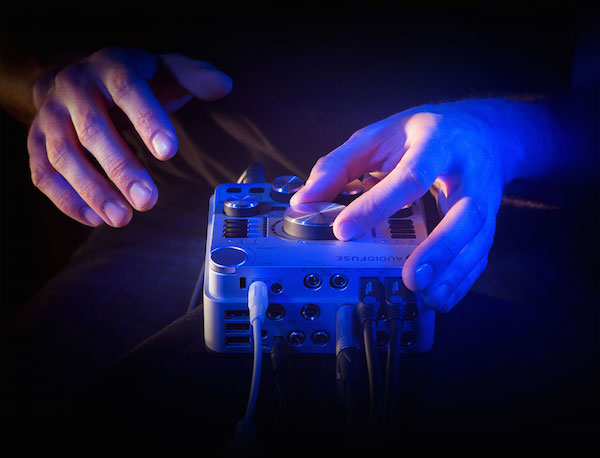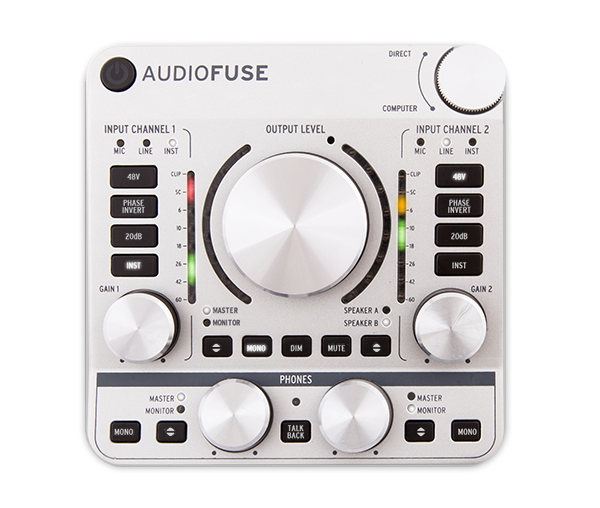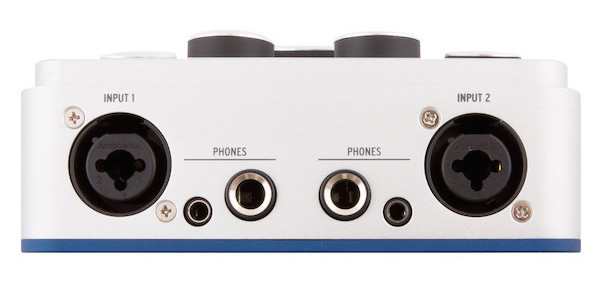
PREVIEW: ARTURIA AUDIOFUSE USB AUDIO INTERFACE

This year’s AES show in New York saw Arturia announce its first ever interface, the AudioFuse. It’s caused a stir, and rightly so, with the company’s reputation primarily in synth, controller and software creation.
Challenging as it is to crack into the crowded audio interface market, Arturia resolutely pushed ahead with AudioFuse’s development, insisting its unique features and design will find a place in the market.
Talking with Arturia Area Sales Manager Antoine Barry, the word ‘better’ cropped up in conversation too many times to ignore; better audio quality, better user experience, better workflow, better connectivity, better compatibility. Apparently these are all focal points of the AudioFuse’s function.
At face value, the desktop interface would appear to deliver on most of these fronts. Two built-in mic preamps provide 60dB gain — which Antoine assures is completely usable throughout the range, even when max’d out. ADAT and S/PDIF provide digital I/O. Two phono amps are a nice extra, capping the interface at 14×14 I/O. Not too shabby for such a compact unit.
So far so good, but to truly be ‘better’ than the rest, it’s got to be unique. And the AudioFuse comes into its own when you delve into its design and workflow.
For starters, the inclusion of two 3.5mm and 6.5mm headphone outputs is ingenious — you’ll never miss that evasive headphone adapter again. And a built-in talkback mic? Classy. The AudioFuse even has a three-port USB hub!
Several of the more recent desktop interfaces have adhered to a certain mould, typically hallmarked by a single large knob sitting in the centre (eg. RME Babyface, Apogee Duet, UAD Apollo Twin, Focusrite Forte, and the MOTU Track16). The AudioFuse also features a large central knob, but its sole function is to control output level. That’s it.
In fact, there are six knobs atop the interface, each of which controls a specific function and nothing else. The same goes for the 18 buttons sprawled across the surface (19 if you count the power button). Daring as it may seem in a multi-touch, multi-purpose, digital world, this ‘one function per button’ design philosophy is refreshingly foolproof. There’s no touch panel, no menus, no screen — which means there’s much less to ‘learn’. And this will likely result in a faster recording workflow than that of its single-knobbed competitors.
Antoine acknowledges that audio quality is always of paramount importance; hence his enthusiasm when talking about the DiscretePRO preamps within the AudioFuse. Designed for signal purity and über-low distortion, Arturia says the frequency response of the pres are ±0.05dB from 20Hz to 20kHz. The AD/DA converters provide up to 24-bit/192k sample rate.
The unit itself resembles a control panel yanked from the Starship Enterprise cockpit. The rear is laden with connections, thanks to Arturia’s suspicion of breakout cables. Two sets of balanced speaker outputs let you A/B switch between monitors, and in another innovative move, these can be switched to Hi-Z outputs for re-amping. Insert points allow for external hardware processing of the two microphone input channels. The interface comes with a protective hard cover and is available in three colours.
Expect to pay around $999 for the Arturia AudioFuse when it hits Australia late January 2016.
CMI Music & Audio:
(03) 9315 2244 or [email protected]



















RESPONSES